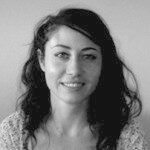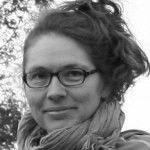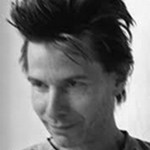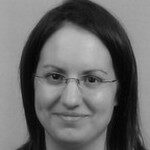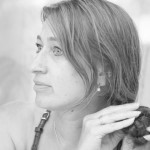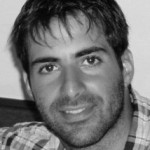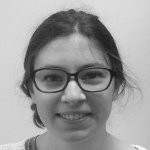SPATIAL ORIENTATION GROUP
The team is working on spatial orientation, a system-level topic, by studying its underlying functional and structural determinants in animals, as well as by analyzing human behavior on earth and in space. We rely on a wide range of experimental approaches, and we carefully tie together different levels of investigation in an overarching framework. This multi-layered approach and combination of expertise dedicated to functional studies constitute the team’s uniqueness at both the national and international level.
Basic understanding gained in experiments performed both on ground and in weightlessness will be applied to better diagnose and treat diseases, and conversely, pathological dysfunction may allow new insight into healthy brain function.
Our work is supported by the French spatial agency (CNES), ANR, CNRS & Université Paris Descartes.
Research topics
- Theme 1 : Multisensory integration, Orientation and Spatial Perception
– Visuo-haptic integration and spatial perception.
– Visuo-vestibular interactions for spatial orientation.
– Influence of gravity on multisensory integration: weightlessness and hypergravity experiments. - Theme 2 : Cortical and subcortical circuits for spatial orientation
– Role of inhibition in the thalamo-presubicular processing of head direction signals.
– Head direction circuit architecture and specific role of neuronal subpopulations.
– Visuo-vestibular and spino-vestibular interactions; circuits and processing. - Theme 3 : vestibular, oculomotor & motor pathologies
– Motor and locomotor control in humans & animal models.
– Cellular determinants of vestibular diseases & motion sickness.
– Mouse model of vestibular disease, Myelin-related diseases & idiopathic nystagmus.
Selected publications
- Stabilization of Gaze during Early Xenopus Development by Swimming-Related Utricular Signals. Lambert FM, Bacqué-Cazenave J, Le Seach A, Arama J, Courtand G, Tagliabue M, Eskiizmirliler S, Straka H, Beraneck M. Curr Biol, 2020.
- Anterior thalamic excitation and feed-forward inhibition of presubicular neurons projecting to medial entorhinal cortex. Nassar M, et al., Fricker D : J Neurosci, 2018
- Activity dependent feedback inhibition may maintain head direction signals in mouse presubiculum. Simonnet J, et al., Fricker D : Nat Commun, 2017

- The visual encoding of purely proprioceptive intermanual tasks is due to the need of transforming joint signals, not to their interhemispheric transfer. Arnoux L, et al., Tagliabue M : J Neurophysiol,2017
- Long-Lasting Visuo-Vestibular Mismatch in Freely-Behaving Mice. Carcaud et al., Beraneck M : ENeuro, 2017
TEAM MEMBERS
Permanent researchers
Visiting scientists
Support staff
Members
Post docs and PhD students
︾ PUBLICATIONS ︾
Articles
- Morfoisse T, Herrera Altamira G, Angelini L, Clément G, Beraneck M, McIntyre J, Tagliabue M. Modality-independent effect of gravity in shaping the internal representation of 3D space for visual and haptic object perception. J Neurosci, 2024.
- Lahlou G, Calvet C, Simon F, Michel V, Alciato L, Plion B, Boutet de Monvel J, Lecomte MJ, Beraneck M, Petit C, Safieddine S. Extended time frame for restoring inner ear function through gene therapy in Usher1G preclinical model. JCI Insight, 2024, 9 (3).
- Schenberg L, Palou A, Simon F, Bonnard T, Barton CE, Fricker D, Tagliabue M, Llorens J, Beraneck M. Multisensory gaze stabilization in response to subchronic alteration of vestibular type I hair cells. Elife, 2023, 12.
- Lambert FM, Beraneck M, Straka H, Simmers J. Locomotor efference copy signaling and gaze control: An evolutionary perspective. Curr Opin Neurobiol, 2023, 82, pp.102761.
- Dubayle D, Vanden-Bossche A, Peixoto T, Morel JL. Hypergravity Increases Blood-Brain Barrier Permeability to Fluorescent Dextran and Antisense Oligonucleotide in Mice. Cells, 2023, 12 (5).
- Kong G, Cataldo A, Nitu M, Dupin L, Gomi H, Haggard P. Interhemispheric communication during haptic self-perception. Proc Biol Sci, 2022, 289 (1988), pp.20221977.
- Rabah A, Le Boterff Q, Carment L, Bendjemaa N, Térémetz M, Dupin L, Cuenca M, Mas JL, Krebs MO, Maier MA, Lindberg PG. A novel tablet-based application for assessment of manual dexterity and its components: a reliability and validity study in healthy subjects. J Neuroeng Rehabil, 2022, 19 (1), pp.35.
- Cataldo A, Dupin L, Dempsey-Jones H, Gomi H, Haggard P. Interplay of tactile and motor information in constructing spatial self-perception. Curr Biol, 2022, 32 (6), pp.1301-1309.e3.
- Foucher JR, Jeanjean LC, de Billy CC, Pfuhlmann B, Clauss JME, Obrecht A, Mainberger O, Vernet R, Arcay H, Schorr B, Weibel S, Walther S, van Harten PN, Waddington JL, Cuesta MJ, Peralta V, Dupin L, Sambataro F, Morrens M, Kubera KM, Pieters LE, Stegmayer K, Strik W, Wolf RC, Jabs BE, Ams M, Garcia C, Hanke M, Elowe J, Bartsch A, Berna F, Hirjak D. The polysemous concepts of psychomotricity and catatonia: A European multi-consensus perspective. Eur Neuropsychopharmacol, 2022, 56, pp.60-73.
- Dupin L, Cuenca M, Baron JC, Maier MA, Lindberg PG. Shrinking of spatial hand representation but not of objects across the lifespan. Cortex, 2022, 146, pp.173-185.
- Simon F, Peusner K, Lewis R, Beraneck M. Editorial: New Approaches to Investigate Congenital Vestibular Disorders. Front Neurol, 2022, 13, pp.921007.
- Bacqué-Cazenave J, Courtand G, Beraneck M, Straka H, Combes D, Lambert FM. Locomotion-induced ocular motor behavior in larval Xenopus is developmentally tuned by visuo-vestibular reflexes. Nat Commun, 2022, 13 (1), pp.2957.
- Bernard-Espina J, Dal Canto D, Beraneck M, McIntyre J, Tagliabue M. How Tilting the Head Interferes With Eye-Hand Coordination: The Role of Gravity in Visuo-Proprioceptive, Cross-Modal Sensory Transformations. Front Integr Neurosci, 2022, 16, pp.788905.
- França de Barros F, Bacqué-Cazenave J, Taillebuis C, Courtand G, Manuel M, Bras H, Tagliabue M, Combes D, Lambert FM, Beraneck M. Conservation of locomotion-induced oculomotor activity through evolution in mammals. Curr Biol, 2022, 32 (2), pp.453-461.
- Verbe J, Lindberg PG, Gorwood P, Dupin L, Duriez P. Spatial hand representation in anorexia nervosa: a controlled pilot study. Sci Rep, 2021, 11 (1), pp.19724.
- Cataldo A, Dupin L, Gomi H, Haggard P. Sensorimotor signals underlying space perception: An investigation based on self-touch. Neuropsychologia, 2021, 151, pp.107729.
- Takács E, Barkaszi I, Czigler I, Pató LG, Altbäcker A, McIntyre J, Cheron G, Balázs L. Persistent deterioration of visuospatial performance in spaceflight. Sci Rep, 2021, 11 (1), pp.9590.
- Opsomer L, Crevecoeur F, Thonnard JL, McIntyre J, Lefèvre P. Distinct adaptation patterns between grip dynamics and arm kinematics when the body is upside-down. J Neurophysiol, 2021, 125 (3), pp.862-874.
- Simon F, Tissir F, Michel V, Lahlou G, Deans M, Beraneck M. Implication of Vestibular Hair Cell Loss of Planar Polarity for the Canal and Otolith-Dependent Vestibulo-Ocular Reflexes in Mice. Front Neurosci, 2021, 15, pp.750596.
- Simonnet J, Richevaux L, Fricker D. Single or Double Patch-Clamp Recordings In Ex Vivo Slice Preparation: Functional Connectivity, Synapse Dynamics, and Optogenetics. Methods Mol Biol, 2021, 2188, pp.285-309.
- Mazuir E, Richevaux L, Nassar M, Robil N, de la Grange P, Lubetzki C, Fricker D, Sol-Foulon N. Oligodendrocyte Secreted Factors Shape Hippocampal GABAergic Neuron Transcriptome and Physiology. Cereb Cortex, 2021, 31 (11), pp.5024-5041.
- Héron A, Papillon V, Dubayle D. Medical, neurobiological, and psychobehavioral perspectives of mastocytosis: a case report. J Med Case Rep, 2021, 15 (1), pp.176.
- Peusner KD, Bell NM, Hirsch JC, Beraneck M, Popratiloff A. Understanding the Pathophysiology of Congenital Vestibular Disorders: Current Challenges and Future Directions. Front Neurol, 2021, 12, pp.708395.
- Bernard-Espina J, Beraneck M, Maier MA, Tagliabue M. Multisensory Integration in Stroke Patients: A Theoretical Approach to Reinterpret Upper-Limb Proprioceptive Deficits and Visual Compensation. Front Neurosci, 2021, 15, pp.646698.
- Simon F, Denoyelle F, Beraneck M. Interpreting Pendred syndrome as a foetal hydrops: clinical and animal model evidence. J Vestib Res, 2021, Feb 11 (doi: 10.323).
- Walther S, van Harten PN, Waddington JL, Cuesta MJ, Peralta V, Dupin L, Foucher JR, Sambataro F, Morrens M, Kubera KM, Pieters LE, Stegmayer K, Strik W, Wolf RC, Hirjak D. Movement disorder and sensorimotor abnormalities in schizophrenia and other psychoses - European consensus on assessment and perspectives. Eur Neuropsychopharmacol, 2020, 38, pp.25-39.
- Carment L, Dupin L, Guedj L, Térémetz M, Cuenca M, Krebs MO, Amado I, Maier MA, Lindberg PG. Neural noise and cortical inhibition in schizophrenia. Brain Stimul, 2020, 13 (5), pp.1298-1304.
- Carment L, Khoury E, Dupin L, Guedj L, Bendjemaa N, Cuenca M, Maier MA, Krebs MO, Lindberg PG, Amado I. Common vs. Distinct Visuomotor Control Deficits in Autism Spectrum Disorder and Schizophrenia. Autism Res, 2020, 13 (6), pp.885-896.
- Simon F, Pericat D, Djian C, Fricker D, Denoyelle F, Beraneck M. Surgical techniques and functional evaluation for vestibular lesions in the mouse: unilateral labyrinthectomy (UL) and unilateral vestibular neurectomy (UVN). J Neurol, 2020, 267 (Suppl 1), pp.51-61.
- Fricker D, Beraneck M, Tagliabue M, Jeffery KJ. Editorial: Coding for Spatial Orientation in Humans and Animals: Behavior, Circuits and Neurons. Front Neural Circuits, 2020, 14, pp.619073.
- França de Barros F, Schenberg L, Tagliabue M, Beraneck M. Long term visuo-vestibular mismatch in freely behaving mice differentially affects gaze stabilizing reflexes. Sci Rep, 2020, 10 (1), pp.20018.
- Lambert FM, Bacqué-Cazenave J, Le Seach A, Arama J, Courtand G, Tagliabue M, Eskiizmirliler S, Straka H, Beraneck M. Stabilization of Gaze during Early Xenopus Development by Swimming-Related Utricular Signals. Curr Biol, 2020.
- Dubayle D, Vanden-Bossche A, Beraneck M, Vico L, Morel JL. Effects of centrifugation and whole-body vibrations on blood-brain barrier permeability in mice. NPJ Microgravity, 2020, 6, pp.1.
- Carment L, Dupin L, Guedj L, Térémetz M, Krebs MO, Cuenca M, Maier MA, Amado I, Lindberg PG. Impaired attentional modulation of sensorimotor control and cortical excitability in schizophrenia. Brain, 2019, 142 (7), pp.2149-2164.
- Dupin L, Haggard P. Dynamic Displacement Vector Interacts with Tactile Localization. Curr Biol, 2019, 29 (3), pp.492-498.e3.
- Dupin L, Carment L, Guedj L, Cuenca M, Krebs MO, Maier MA, Amado I, Lindberg PG. Predictive Modulation of Corticospinal Excitability and Implicit Encoding of Movement Probability in Schizophrenia. Schizophr Bull, 2019, 45 (6), pp.1358-1366.
- França de Barros F, Carcaud J, Beraneck M. Long-term Sensory Conflict in Freely Behaving Mice. J Vis Exp, 2019 (144).
- Cassel R, Bordiga P, Carcaud J, Simon F, Beraneck M, Le Gall A, Benoit A, Bouet V, Philoxene B, Besnard S, Watabe I, Pericat D, Hautefort C, Assie A, Tonetto A, Dyhrfjeld-Johnsen J, Llorens J, Tighilet B, Chabbert C. Morphological and functional correlates of vestibular synaptic deafferentation and repair in a mouse model of acute-onset vertigo. Dis Model Mech, 2019, 12 (7).
- Richevaux L, Schenberg L, Beraneck M, Fricker D. In Vivo Intracerebral Stereotaxic Injections for Optogenetic Stimulation of Long-Range Inputs in Mouse Brain Slices. J Vis Exp, 2019 (151).
- Héron A, Leroux C, Dubayle D. [Use of placebo in French hospitals: data from polyvalent medicine units]. Med Sci (Paris), 2019, 35 (8-9), pp.674-681.
- Dupin L, Hayward V, Wexler M. Radial trunk-centred reference frame in haptic perception. Sci Rep, 2018, 8 (1), pp.13550.
- Lambert L, Dubayle D, Fafouri A, Herzog E, Csaba Z, Dournaud P, El Mestikawy S, Bernard V. Endocytosis of Activated Muscarinic m2 Receptor (m2R) in Live Mouse Hippocampal Neurons Occurs via a Clathrin-Dependent Pathway. Front Cell Neurosci, 2018, 12, pp.450.
- Bacqué-Cazenave J, Courtand G, Beraneck M, Lambert FM, Combes D. Temporal Relationship of Ocular and Tail Segmental Movements Underlying Locomotor-Induced Gaze Stabilization During Undulatory Swimming in Larval Xenopus. Front Neural Circuits, 2018, 12, pp.95.
- Idoux E, Tagliabue M, Beraneck M. No Gain No Pain: Relations Between Vestibulo-Ocular Reflexes and Motion Sickness in Mice. Front Neurol, 2018, 9, pp.918.
- Nassar M, Simonnet J, Huang LW, Mathon B, Cohen I, Bendels MHK, Beraneck M, Miles R, Fricker D. Anterior thalamic excitation and feed-forward inhibition of presubicular neurons projecting to medial entorhinal cortex. J Neurosci, 2018.
- Shackleford G, Sampathkumar NK, Hichor M, Weill L, Meffre D, Juricek L, Laurendeau I, Chevallier A, Ortonne N, Larousserie F, Herbin M, Bièche I, Coumoul X, Beraneck M, Baulieu EE, Charbonnier F, Pasmant E, Massaad C. Involvement of Aryl hydrocarbon receptor in myelination and in human nerve sheath tumorigenesis. Proc Natl Acad Sci U S A, 2018.
- Harlé G, Kaminski S, Dubayle D, Frippiat JP, Ropars A. Murine splenic B cells express corticotropin-releasing hormone receptor 2 that affect their viability during a stress response. Sci Rep, 2018, 8 (1), pp.143.
- Al Amir I, Dubayle D, Héron A, Delayre-Orthez C, Anton PM. Maillard reaction products from highly heated food prevent mast cell number increase and inflammation in a mouse model of colitis. Nutr Res, 2017, 48, pp.26-32.
- Hoellinger T, McIntyre J, Jami L, Hanneton S, Cheron G, Roby-Brami A. A strategy of faster movements used by elderly humans to lift objects of increasing weight in ecological context. Neuroscience, 2017, 357, pp.384-399.
- Arnoux L, Fromentin S, Farotto D, Beraneck M, McIntyre J, Tagliabue M. The visual encoding of purely proprioceptive intermanual tasks is due to the need of transforming joint signals, not to their interhemispheric transfer. J Neurophysiol, 2017, 118 (3), pp.1598-1608.
- Emptoz A, Michel V, Lelli A, Akil O, Boutet de Monvel J, Lahlou G, Meyer A, Dupont T, Nouaille S, Ey E, Franca de Barros F, Beraneck M, Dulon D, Hardelin JP, Lustig L, Avan P, Petit C, Safieddine S. Local gene therapy durably restores vestibular function in a mouse model of Usher syndrome type 1G. Proc Natl Acad Sci U S A, 2017.
- Juricek L, Carcaud J, Pelhaitre A, Riday TT, Chevallier A, Lanzini J, Auzeil N, Laprévote O, Dumont F, Jacques S, Letourneur F, Massaad C, Agulhon C, Barouki R, Beraneck M, Coumoul X. AhR-deficiency as a cause of demyelinating disease and inflammation. Sci Rep, 2017, 7 (1), pp.9794.
- Dupin L, Hayward V, Wexler M. Generalized movement representation in haptic perception. J Exp Psychol Hum Percept Perform, 2017, 43 (3), pp.581-595.
- Carcaud J, França de Barros F, Idoux E, Eugène D, Reveret L, Moore LE, Vidal PP, Beraneck M. Long-Lasting Visuo-Vestibular Mismatch in Freely-Behaving Mice Reduces the Vestibulo-Ocular Reflex and Leads to Neural Changes in the Direct Vestibular Pathway. ENeuro, 2017, 4 (1).
- Malinvaud D, Londero A, Niarra R, Peignard P, Warusfel O, Viaud-Delmon I, Chatellier G, Bonfils P. Auditory and visual 3D virtual reality therapy as a new treatment for chronic subjective tinnitus: Results of a randomized controlled trial. Hear Res, 2016, 333, pp.127-35.
- Senot P, Damm L, Tagliabue M, McIntyre J. Physiological mechanisms for stabilizing the limb when acting against physical constraints. Conf Proc IEEE Eng Med Biol Soc, 2016, 2016, pp.13-16.
- Bourrelly A, McIntyre J, Luyat M. Perception of affordances during long-term exposure to weightlessness in the International Space station. Cogn Process, 2015.
- Bengoetxea A, Leurs F, Hoellinger T, Cebolla AM, Dan B, Cheron G, McIntyre J. Physiological modules for generating discrete and rhythmic movements: component analysis of EMG signals. Front Comput Neurosci, 2015.
- Tagliabue M, Ciancio AL, Brochier T, Eskiizmirliler S, Maier MA. Differences between kinematic synergies and muscle synergies during two-digit grasping. Front Hum Neurosci, 2015.
- Devars du Mayne M, Gratacap M, Malinvaud D, Grenouillet F, Bonfils P. An uncommon cause of allergic fungal sinusitis: Rhizopus oryzae. Ear Nose Throat J, 2015.
- Boursereau R, Donadieu A, Dabertrand F, Dubayle D, Morel J. Blood brain barrier precludes the cerebral arteries to intravenously-injected antisense oligonucleotide. Eur J Pharmacol, 2015.
- Dupin L, Hayward V, Wexler M. Direct coupling of haptic signals between hands. Proceedings of the National Academy of Sciences, 2014, doi: 10.107. (PDF)
- Bengoetxea A, Leurs F, Hoellinger T, Cebolla AM, Dan B, McIntyre J, Cheron G. Physiological modules for generating discrete and rhythmic movements: action identification by a dynamic recurrent neural network. Front Comput Neurosci, 2014.
- Laccourreye O, Malinvaud D, Garcia D, Ménard M, Hans S, Cauchois R, Bonfils P. Postoperative Hemorrhage After Transoral Oropharyngectomy for Cancer of the Lateral Oropharynx. Ann Otol Rhinol Laryngol, 2014.
- Laccourreye O, Malinvaud D, Ménard M, Consoli S, Giraud P, Bonfils P. Total laryngectomy or laryngeal preservation for advanced laryngeal cancer. Impact of the functional risk upon the patient’s preferences. Eur Ann Otorhinolaryngol Head Neck Dis, 2014.
- Laccourreye O, Malinvaud D, Ménard M, Bonfils P. Unilateral laryngeal nerve paralysis in the adult : Epidemiology, symptoms, physiopathology and treatment. Presse Med, 2014.
- Tagliabue M, McIntyre J. A modular theory of multisensory integration for motor control. Frontiers in Computational Neuroscience. Front Comput Neurosci, 2014.
- Cheron G, Leroy A, Palmero-Soler E, De Saedeleer C, Bengoetxea A, Cebolla A M, Vidal M, Dan B, Berthoz A, McIntyre J. Gravity influences top-down signals in visual processing. PLoS One, 2014.
- Dupin L, Wexler M. Motion perception by a moving observer in a three-dimensional environment. Journal of Vision, 2013, 13, pp.1-14.
- Laccourreye O, Werner A, Garcia D, Malinvaud D, Tran Ba Huy P, Bonfils P. First bite syndrome. Eur Ann Otorhinolaryngol Head Neck Dis, 2013.
- Prud’homme C, Espinoza S, Badoual C, Laccourreye O, Bonfils P, Malinvaud D. Late recurrence or secondary location? Towards a better understanding of the physiopathology of inverted papilloma. Eur Ann Otorhinolaryngol Head Neck Dis, 2013.
- Laccourreye O, Benito J, Menard M, Garcia D, Malinvaud D, Holsinger C. Lateral pharyngotomy for selected invasive squamous cell carcinoma of the lateral oropharynx--part I: how. Laryngoscope, 2013.
- Espinoza S, Malinvaud D, Siauve N, Halimi P. Perfusion in ENT imaging. Diagn Interv Imaging, 2013.
- Malinvaud D, Mukundan S, Crevier-Buchman L, Bonfils P, Laccourreye O. Glottic bamboo nodules from systemic lupus erythematosus. Ann Otol Rhinol Laryngol, 2013.
- El Amri G, Malinvaud D, Laccourreye O, Bonfils P. Cystic lesions of the pterygoid process. Eur Ann Otorhinolaryngol Head Neck Dis, 2013.
- Lambert FM, Malinvaud D, Gratacap M, Straka H, Vidal PP. Restricted neural plasticity in vestibulospinal pathways after unilateral labyrinthectomy as the origin for scoliotic deformations. J Neurosci, 2013.
- Tagliabue M, Arnoux L, McIntyre J. Keep your head on straight : facilitating sensori-motor transformations for eye-hand coordination. Neuroscience, 2013.
- Rinaldi A, Defterali C, Mialot A, Garden DLF, Beraneck M, Nolan MF. HCN1 channels in cerebellar Purkinje cell promote late stages of learning and constrain synaptic inhibition. J Physiol, 2013.
- De Saedeleer C, Vidal M, Lipshits M, Bengoetxea A, Cebolla A M, Berthoz A, Cheron G, McIntyre J. Weightlessness alters up/down asymmetries in the perception of self-motion. Exp Brain Res, 2013.
- Höppner H, McIntyre J, Van Der Smagt P. Task dependency of grip stiffness–a study of human grip force and grip stiffness dependency during two different tasks with same grip forces. PLoS One, 2013.
- Héron A, Dubayle D. A focus on mast cells and pain. J Neuroimmunol, 2013.
- Romand R, Krezel W, Beraneck M, Cammas L, Fraulob V, Messaddeq N, Kessler P, Hashino E, Dollé P. Retinoic acid deficiency impairs the vestibular function. J Neurosci, 2013.
- Tagliabue M, McIntyre J. When kinesthesia becomes visual: a theoretical justification for executing motor tasks in visual space. PLoS One, 2013.
- Chevallier A, Mialot A, Petit JM, Fernandez-Salguero P, Barouki R, Coumoul X, Beraneck M. Oculomotor deficits in aryl hydrocarbon receptor null mouse. PLoS One, 2013.
- Rubin F, Badoual C, Moya-Plana A, Malinvaud D, Laccourreye O, Bonfils P. Inverted papilloma of the middle ear. Eur Ann Otorhinolaryngol Head Neck Dis, 2012.
- Devars du Mayne M, Moya-Plana A, Malinvaud D, Laccourreye O, Bonfils P. Sinus mucocele: natural history and long-term recurrence rate. Eur Ann Otorhinolaryngol Head Neck Dis, 2012.
- Laccourreye O, Malinvaud D, Holsinger FC, Consoli S, Ménard M, Bonfils P. Trade-off between survival and laryngeal preservation in advanced laryngeal cancer: the otorhinolaryngology patient’s perspective. Ann Otol Rhinol Laryngol, 2012.
- Laccourreye O, Malinvaud D, Alzahrani H, Ménard M, Garcia D, Bonfils P, Holsinger FC. Conventional transoral surgery for stage I-II squamous cell carcinoma of the tonsillar region. Head Neck, 2012.
- Malinvaud D, Badoual C, Rubio MT, Halimi P, Bonfils P. Extraosseous plasmacytoma of the lacrimal duct. B-ENT, 2012.
- Bonfils P, Moya-Plana A, Badoual C, Nadéri S, Malinvaud D, Laccourreye O. Intraparotid Kimura disease. Eur Ann Otorhinolaryngol Head Neck Dis, 2012.
- Tagliabue M, McIntyre J. Eye-hand coordination when the body moves : dynamic egocentric and exocentric sensory encoding. Neurosci Lett, 2012.
- Senot P, Zago M, Le Séac’h A, Zaoui M, Berthoz A, Lacquaniti F, McIntyre J. When up is down in 0g : how gravity sensing affects the timing of interceptive actions. J Neurosci, 2012.
- Tran H, De Waele C, Beraneck M, Vassias I, Gioanni H, Huy PTB, Herman P, Vidal PP, Kania RE. Auditory outcomes after implantation and electrical stimulation of the lateral ampullar nerve in guinea pig. Ear Hear, 2012.
- Beraneck M, Idoux E. Reconsidering the role of neuronal intrinsic properties and neuromodulation in vestibular homeostasis. Front Neurol, 2012.
- Beraneck M, Bojados M, Le Séac’h A, Jamon M, Vidal PP. Ontogeny of mouse vestibulo-ocular reflex following genetic or environmental alteration of gravity sensing. PLoS One, 2012.
- Dubayle D, Héron A. Decrease of cerebral mast cell degranulation after systemic administration of lipopolysaccharide. Inflamm Res, 2012.
- Casellato C, Tagliabue M, Pedrocchi A, Papaxanthis C, Ferrigno G, Pozzo T. Reaching while standing in microgravity: a new postural solution to oversimplify movement control. Exp Brain Res, 2011.
- Bonfils P, Laccourreye O, Durand FX, Malinvaud D, Bensimon JL. Sudden deafness following a sternutatory attack. Eur Ann Otorhinolaryngol Head Neck Dis, 2011.
- Soudry Y, Lemogne C, Malinvaud D, Consoli SM, Bonfils P. Olfactory system and emotion: common substrates. Eur Ann Otorhinolaryngol Head Neck Dis, 2011.
- Malinvaud D, Halimi P, Bonfils P. Pneumosinus dilatans associated with nasal polyposis. B-ENT, 2011.
- Mahut B, Plantier L, Malinvaud D, Chevalier-Bidaud B, Bonfils P, Delclaux C. Pathophysiology of airway hyperresponsiveness in patients with nasal polyposis. Respir Med, 2011.
- Laccourreye O, Malinvaud D, Ménard M, Bonfils P. Paralysie laryngée unilatérale de l’adulte. Rev Prat, 2011.
- Soudry Y, Lemogne C, Malinvaud D, Consoli SM, Bonfils P. Olfactory system and emotion: common substrates. Les bases communes du système olfactif et des émotions. Eur Ann Otorhinolaryngol Head Neck Dis, 2011.
- Lenzi T, Vitiello N, McIntyre J, Roccella S, Carrozza MC. A robotic model to investigate human motor control. Biol Cybern, 2011.
- Beraneck M, Straka H. Vestibular signal processing by separate sets of neuronal filters. J Vestib Res, 2011.
- Eugène D, Idoux E, Beraneck M, Moore LE, Vidal PP. Intrinsic membrane properties of central vestibular neurons in rodents. Exp Brain Res, 2011.
- Ivanenko YP, Labini FS, Cappellini G, Macellari V, McIntyre J, Lacquaniti F. Gait transitions in simulated reduced gravity. J Appl Physiol (1985), 2011.
- Cleret de Langavant L, Remy P, Trinkler I, McIntyre J, Dupoux E, Berthoz A, Bachoud-Lévi AC. Behavioral and neural correlates of communication via pointing. PLoS One, 2011.
- Tagliabue M, McIntyre J. Necessity is the mother of invention : Reconstructing missing sensory information in multiple, concurrent reference frames for eye-hand coordination. J Neurosci, 2011.
- Jarrassé N, Tagliabue M, Robertson JV, Maiza A, Crocher V, Roby-Brami A, Morel G. A methodology to quantify alterations in human upper limb movement during co-manipulation with an exoskeleton. IEEE Trans Neural Syst Rehabil Eng, 2010.
- Beghdadi W, Porcherie A, Schneider BS, Dubayle D, Peronet R, Huerre M, Watanabe T, Ohtsu H, Louis J, Mécheri S. Rôle de l’histamine et des récepteurs histaminiques dans la pathogenèse du paludisme. Med Sci (Paris), 2009.
- Beghdadi W, Porcherie A, Schneider BS, Morisset S, Dubayle D, Peronet R, Dy M, Louis J, Arrang JM, Mécheri S. Histamine H(3) receptor-mediated signaling protects mice from cerebral malaria. PLoS One, 2009.
- Rossignol J, Boyer C, Thinard R, Remy S, Dugast AS, Dubayle D, Dey ND, Boeffard F, Delecrin J, Heymann D, Vanhove B, Anegon I, Naveilhan P, Dunbar GL, Lescaudron L. Mesenchymal stem cells induce a weak immune response in the rat striatum after allo or xenotransplantation. J Cell Mol Med, 2009.
- Tagliabue M, Ferrigno G, Horak F. Effects of Parkinson’s disease on proprioceptive control of posture and reaching while standing. Neuroscience, 2008.
- Beghdadi W, Porcherie A, Schneider BS, Dubayle D, Peronet R, Huerre M, Watanabe T, Ohtsu H, Louis J, Mécheri S. Inhibition of histamine-mediated signaling confers significant protection against severe malaria in mouse models of disease. J Exp Med, 2008.
- Tagliabue M, Pedrocchi A, Pozzo T, Ferrigno G. A mathematical tool to generate complex whole body motor tasks and test hypotheses on underlying motor planning. Med Biol Eng Comput, 2007.
- Casellato C, Tagliabue M, Pedrocchi A, Ferrigno G, Pozzo T. How does microgravity affect the muscular and kinematic synergies in a complex movement?. J Gravit Physiol, 2007.
- Dubayle D, Servière J, Menétrey D. The effects of viscero-somatic interactions on thalamic mast cell recruitment in cystitic rats. J Neuroimmunol, 2007.
- Ugolini G, Klam F, Doldan Dans M, Dubayle D, Brandi AM, Büttner-Ennever J, Graf W. Horizontal eye movement networks in primates as revealed by retrograde transneuronal transfer of rabies virus: differences in monosynaptic input to \"slow\" and \"fast\" abducens motoneurons. J Comp Neurol, 2006.
- Tagliabue M, Pedrocchi A, Baroni G, Pedotti A, Ferrigno G. Evaluation of theories of complex movement planning in different levels of gravity. Acta Astronaut, 2005.
- Dubayle D, Servière J, Menétrey D. Evidence for serotonin influencing the thalamic infiltration of mast cells in rat. J Immunol, 2005.
- Dubayle D, Malissin I, Menétrey D. Differential effects of two analgesic drugs, morphine chlorhydrate and acetylsalicylic acid, on thalamic mast cell numbers in rat. J Immunol, 2005.
- Tagliabue M, Pedrocchi A, Gower V, Ferrigno G, Pozzo T. Whole body pointing movements in transient microgravity: preliminary results. J Gravit Physiol, 2004.
- Menétrey D, Dubayle D. A one-step dual-labeling method for antigen detection in mast cells. Histochem Cell Biol, 2003.
- Servière J, Dubayle D, Menétrey D. Increase of rat medial habenular mast cell numbers by systemic administration of cyclophosphamide. Toxicol Lett, 2003.
- Grantyn A, Brandi AM, Dubayle D, Graf W, Ugolini G, Hadjidimitrakis K, Moschovakis A. Density gradients of trans-synaptically labeled collicular neurons after injections of rabies virus in the lateral rectus muscle of the rhesus monkey. J Comp Neurol, 2002.
- Buhot MC, Dubayle D, Malleret G, Javerzat S, Segu L. Exploration, anxiety, and spatial memory in transgenic anophthalmic mice. Behav Neurosci, 2001.
- Rousseau B, Dubayle D, Sennlaub F, Jeanny JC, Costet P, Bikfalvi A, Javerzat S. Neural and angiogenic defects in eyes of transgenic mice expressing a dominant-negative FGF receptor in the pigmented cells. Exp Eye Res, 2000.
- Dubayle D, Viala D. Effects of CO2 and pH on the spinal respiratory rhythm generator in vitro. Brain Res Bull, 1998.
- Dubayle D, Viala D. Entrainment of the medullary respiratory generators by electrical stimulation in the cervical grey matter on in vitro preparations of newborn rat. Neurosci Lett, 1998.
- Dubayle D, Viala D. Interactions between medullary and spinal respiratory rhythm generators in the in vitro brainstem spinal cord preparation from newborn rats. Exp Brain Res, 1996.
- Dubayle D, Viala D. Localization of the spinal respiratory rhythm generator by an in vitro electrophysiological approach. Neuroreport, 1996.
- Dubayle D, Viala D. [Possible existence of spinal inspiratory activity in the in vitro brain stem-spinal cord preparation from newborn rats]. C R Acad Sci III, 1993.
Chapters
- Beraneck M, Lambert FM. Differential Organization of Intrinsic Membrane Properties of Central Vestibular Neurons and Interaction with Network Properties. The Senses: A Comprehensive Reference, Bernd Fritzsch - Academic Press, pp.273-289, 2020.
- Sadeghi S, Beraneck M. Task-specific Differentiation of Central Vestibular Neurons and plasticity during vestibular compensation. The Senses: A Comprehensive Reference, Bernd Fritzsch - Academic Press, pp.290-308, 2020.
- Tagliabue M, Francis, N, Hao Y, Duret M, Brochier T, Riehle A, Maier MA, Eskiizmirliler S. Estimation of two-digit grip type and grip force level by frequency decoding of motor cortex activity for a BMI application. Proceedings of The 17th International Conference on Advanced Robotics (ICAR) 27 -31 July, 2015 Istanbul, Turkey, Sinan Kalkan, Uluç Saranlı - ICAR International Conference, pp.308-315, 2015.
- Caon M, Tagliabue M, Angelini L, Perego P, Mugellini E, Andreoni G. Wearable Technologies for Automotive User Interfaces: Danger or Opportunity?. Proceeding AutomotiveUI \\’14 Adjunct Proceedings of the 6th International Conference on Automotive User Interfaces and Interactive Vehicular Applications, Linda Ng Boyle, Andrew L Kun, Sebastian Osswald, B - ACM, pp.1-5, 2014.
- Beraneck M, Lambert FM, Sadeghi SG. Chapter 15 – Functional Development of the Vestibular System: Sensorimotor Pathways for Stabilization of Gaze and Posture. Development of Auditory and Vestibular Systems (Fourth Edition), Raymond Romand, Isabel Varela-Nieto - Academic Press, pp.449-487, 2014.
Speech communication
- Eskiizmirliler S, Bertrand O, Tagliabue M, Maier MA. Motion control of thumb and index finger of an artificial hand for precision grip using asynchronous decoding of CM cell activity. Twenty Second Annual Computational Neuroscience Meeting, 2013, Paris.
Patent
- Beraneck M, Reveret L, Vidal PP. Method for quantifying the behaviour of an animal. Patent # : WO2015/036495. 2015.



